|
Welcome to Kerry's Unofficial1 Fujinon Large Format Lens Page!
(a.k.a. Everything I know and don't know about Fujinon Large
Format Lenses)
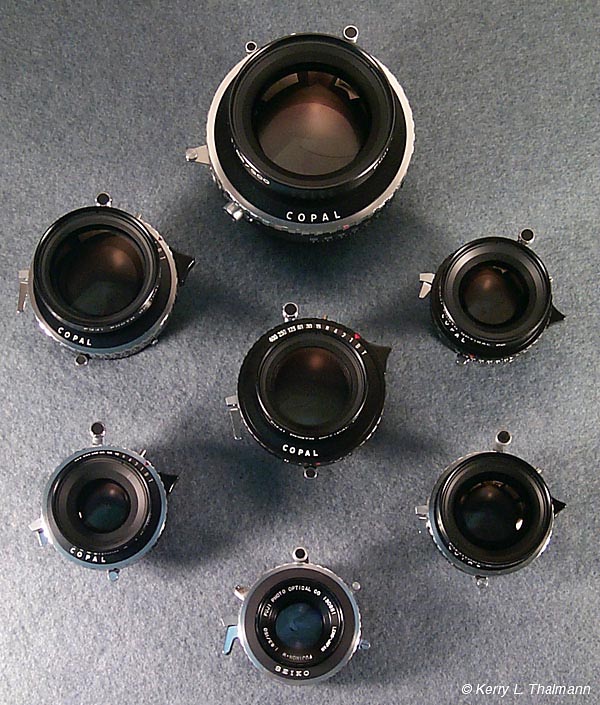
Figure 1. Fujinon Lenses
From Top to Bottom - Left to Right
300mm f5.6 Fujinon W
360mm f10 Fujinon A
240mm f9 Fujinon A
450mm f12.5 Fujinon C
180mm f9 Fujinon A
135mm f5.6 Fujinon NW
150mm f6.3 Fujinon W
Introduction: Over the
last couple years, I've been fortunate enough to use several Fujinon large format
lenses. I was first attracted to the Fuji large format lenses due to some very
unique offerings. For example, the 240mm f9 Fujinon A and the 450mm f12.5 Fujinon C
both offer a combination of tremendous coverage, outstanding sharpness, tiny size and very
light weight that is unavailable in comparable focal lengths from any other lens
manufacturer. I purchased these two lenses new from Badger Graphic Sales in March, 1998. In the
two years since, they have become two of my favorite lenses (see: Future
Classics). Based on the compact size and excellent performance of these two
lenses, I decided I to try some other Fuji lenses. Unfortunately, two of the
ones I wanted to try, the 150mm f6.3 Fujinon W and the 360mm f10 Fujinon A, have long ago
been discontinued. Through Ebay, I managed to obtain samples of each (along with a
bunch of other stuff I don't really need and can't really afford). During the course of
shopping for used Fujinon lenses, I came up with several questions that nobody seemed to
be able to answer. That's what lead me to create of this web page. Here, I will
share what I know about Fujinon large format lenses, and welcome input from anyone else
who may have information to share. I'll start by posting everything I know, and with your
help, hopefully we'll be able to put together the pieces of this perplexing puzzle.
Fujinon makes some GREAT large format lenses (yes, they are still
making them - but officially only for the Japanese market). Unfortunately, they have
not had an official North American distributor for about 10 years. The lack of an
official US distributor makes it especially difficult to obtain information on their
excellent products. Harder still, is finding information on older, discontinued
models (that are readily available on the used market). Even though they don't have
an official distributor, Fujinon large format lenses are currently available new in the US
from a number of sources. I have found Badger
Graphic Sales to consistently have the best prices and best selection. They usually
have several models in stock and get weekly shipments from Japan. They are also the best
source for information on current Fujinon products.
1 Please note the word
"Unofficial" in the title of this page. I am not an employee of, nor a
spokesperson for, Fujifilm or Fujinon. I did speak with someone at Fuji Photo
Film U.S.A. while preparing this page. In spite of the fact that they haven't
officially sold Fujinon large format lenses in the US in nearly 10 years, my contact at
Fuji Photo Film U.S.A. was very gracious, helpful and generous with his time. He
sent me copies of all the information he had on Fujinon large format lenses, and I have
posted it here (along with a lot more information I have collected from other
sources). So, please, don't pester the fine folks at Fuji U.S.A. with questions
about Fujinon large format lenses. They do not sell or support Fujinon large format
lenses in any capacity, nor are they responsible for servicing Fujinon large format
lenses. Feel free to contact Fuji U.S.A. with questions about their wonderful films
(I'm a Velvia shooter myself) and other products that they officially support, but for
information about Fujinon large format lenses, everything they can tell you (and quite a
bit more), can be found here at this unofficial web site.
What I Know: Over the years, the Fujinon large format
lens lines have gone through numerous changes. Early samples were single coated and
in Seiko shutters. Current samples are EBC multicoated and in all black Copal
shutters. In between, many models have been discontinued and new models introduced.
To add to the confusion, it appears that certain models were discontinued, and then
brought back by popular demand. In addition to the original Seiko shutters, and the
current all black Copal models, Fujinon large format lenses were offered in at least two
other styles of Copal shutters. Serial number data on Fujinon large format lenses,
seems to be especially difficult to obtain, and from what limited information I have
compiled, it is obviously not sequential. It appears that the serial numbers are
assigned in large blocks whenever a new lens is brought to market. I don't have
enough data to be 100% certain, but it appears serial numbers are assigned in blocks of
10,000. If those 10,000 get used up for a particular design, then they assign a new
block of what turn out to be much higher serial numbers. All this is relatively
confusing, and makes it very hard, almost impossible, to even guess at a manufacturing
date for any particular lens. For example, a 20 year old, single coated 90mm f8 SW
in a Seiko shutter has the impressively high serial number of 601xxx, yet a brand new
(March, 2000) 600mm f11.5 C has the seemingly low serial number of 265xxx. With
the limited data I have collected so far, the best you can do based on serial numbers is
get a feel for the relative ages of two lenses of the same type. Based on this
limited data, it is not possible to estimate the date of manufacture of a Fujinon lens
based solely on the serial number. Nor is it possible to compare the age of two
Fujinon lenses of different types using serial numbers. Table 1. below is a summary
of data I have collected, from various sources on Fuji large format lenses. The
table is far from complete, and is a work in progress. This is one place I need your
help. If you have any Fujinon large format lenses, and would like to contribute data
to this table, please email the information
on your lenses (see Definitions below for a description of the
column headings):
Focal
Length |
Maximum
Aperture |
Series
Designation |
Lettering
Location |
Shutter |
Coating |
Serial
Number |
Date
Purchased
(New) |
75mm |
f5.6 |
SWD |
Outer |
Copal B |
Multi |
562xxx |
Mar-00 |
90mm |
f8 |
SW |
Inner |
Seiko |
Single |
601464 |
NA |
90mm |
f8 |
SW |
Outer |
Copal C |
Multi |
603343 |
NA |
90mm |
f8 |
SW |
Outer |
Copal B |
Multi |
607xxx |
Mar-00 |
105mm |
f8 |
SW |
Inner |
Seiko |
Single |
434160 |
NA |
125mm |
f5.6 |
W |
Inner |
Seiko |
Single |
344013 |
NA |
135mm |
f5.6 |
W |
Outer |
Copal C |
Multi |
543243 |
NA |
150mm |
f5.6 |
W |
Outer |
Copal C |
Multi |
530xxx |
NA |
150mm |
f5.6 |
W |
Outer |
Copal S |
Multi |
531xxx |
NA |
150mm |
f5.6 |
CM/W |
Outer |
Copal B |
Multi |
760xxx |
Mar-00 |
150mm |
f5.6 |
CM/W |
Outer |
Copal B |
Multi |
761xxx |
Mar-00 |
150mm |
f6.3 |
W |
Inner |
Seiko |
Single |
130881 |
NA |
180mm |
f5.6 |
W |
Inner |
Copal S |
Single |
188521 |
NA |
180mm |
f9 |
A |
Outer |
Copal C |
Multi |
282050 |
NA |
210mm |
f5.6 |
W |
Outer |
Copal C |
Multi |
490xxx |
NA |
240mm |
f9 |
A |
Outer |
Copal B |
Multi |
522492 |
Mar-98 |
240mm |
f9 |
A |
Outer |
Copal B |
Multi |
522556 |
Dec-99 |
300mm |
f5.6 |
W |
Outer |
Copal C |
Multi |
272380 |
NA |
300mm |
f8 |
T |
Outer |
Copal B |
Multi |
703429 |
NA |
300mm |
f8.5 |
C |
Outer |
Copal B |
Multi |
633xxx |
Mar-00 |
360mm |
f10 |
A |
Inner |
Copal S |
Single |
501119 |
NA |
360mm |
f10 |
A |
Outer |
Copal C |
Multi |
521309 |
NA |
400mm |
f12 |
T |
Outer |
Copal C |
Multi |
641242 |
NA |
450mm |
f12.5 |
C |
Outer |
Copal B |
Multi |
640773 |
Sep-97 |
450mm |
f12.5 |
C |
Outer |
Copal B |
Multi |
640820 |
Mar-98 |
600mm |
f11.5 |
C |
Outer |
Copal B |
Multi |
265xxx |
Mar-00 |
Table 1. Fujinon Large Format Lens Serial
Number Data
Definitions: Let's start
by defining the column headings and the meaning of the entries in the table.
Focal Length: Pretty self-explanatory.
Fujinon large format lenses have been manufactured in the following focal lengths: 65mm, 75mm, 90mm, 105mm, 120mm, 125mm, 135mm, 150mm, 180mm, 210mm,
240mm, 250mm, 300mm, 360mm, 400mm, 420mm, 450mm, 600mm, 1200mm
Maximum Aperture: Again, pretty simple. Fujinon
large format lenses have been manufactured with the following maximum apertures: f5.6, f6.3, f6.5, f6.7, f8, f8.5, f9, f10, f11, f11.5, f12, f12.5,
f24
Series Designation: This is where things start
to get a little confusing. Many of the Fujinon large format lens designs appear to
have remained stable since introduction (SWD, A, C, T, SF). However, some lines have
been completely discontinued (L) and others (W, NW, original SW) replaced with newer
designs. The real confusion surrounds the "standard" line, and how it has
evolved. Originally, this line was designated W and was of the standard plasmat type
(6 elements in 4 groups). 1979 was a year of transition for this series. The
Fujinon Professional Lenses brochure I have dated Jan-1979 includes both the original W
series and several focal lengths in the new NW series. All NW focal lengths from
105mm - 180mm consisted of 6 elements in 6 groups, the 210 NW was of 6/5 construction and
the 250 f6.7 was replaced with an f6.3 design (both 250s were 6/4 construction). The
300mm and 360mm designs were not changed at this time and continued to be designated as W
in the literature. In a move that seems almost intentionally confusing, although the
New W Series was consistently referred to as NW in the literature, the lenses themselves
were merely labeled W (like their predecessors). One further anomaly is the little
150mm f6.3 Fujinon W. This lens was not a plasmat type like all the other members of
the original W series. It is a tessar derived 4/3 design. For some mystifying
reason this particular lens was granted W status, while all the other 4/3 tessar derived
designs (210mm, 300mm, 420mm) carried the L designation. The final evolutionary step
in the Fujinon standard series is the current CM/W line. All of the CM/W line are of
either 6/5 construction (105mm, 125mm, 180mm, 210mm, 300mm) or 6/6 construction (135mm,
150mm, 250mm, 360mm, 450mm). Mercifully, all CM/W lenses are labeled as CM Fujinon
W. One additional point of confusion is the inconsistent use of the S suffix on the
lens designation. In the limited amount of literature I have collected so far, the S
suffix was used universally from 1979 through the late 1980s (perhaps earlier and later as
well), but was used very sparingly and inconsistently on the lenses themselves. So,
in the published Fujinon literature from this time period, the S suffix appears on all the
product lines (SWD becomes SWDS, SW - SWS, W - WS, NW - NWS, and so on). I have seen
numerous Fujinon lenses from this same time period, and only one (a 150mm F6.3) was
actually labeled with the S suffix on the lens. The current literature has
completely dropped the S suffix (we're back to plain old simple SWD, SW, CM/W, etc.), but
if you happen to buy a new Fujinon large format lens today, the box the lens comes in will
carry the S suffix. I believe, but am not 100% certain that the S suffix merely
meant the lens came in a shutter. That makes sense and could very well be true (back
in the 1970s, Fuji produced a series of barrel mount tessar type large format lenses - the
literature of the day refers to them simply as Fujinon with no series designation).
Still, the use of this S suffix, both in the literature and on the lenses themselves,
seems to be totally arbitrary and meaningless. The N prefix was also somewhat
indiscriminately applied. The N in this case meaning "New". I
already mentioned the NW series, but the original SW series was also replaced by the NSW
line in mid-1982. Eventually, the N prefix was dropped (current literature is back
to calling this the SW series, even though the current designs in this series are
obviously not of the original SW type from the 1970s). Well, now that we've got that
all cleared up (We do, don't we? Good.) here (with or without random and meaningless
S suffixes) are the various Fujinon large format lens designations used over the years: SWD - Super Wide Deluxe; SW - Super Wide; W - Wide; NW -
New Wide; CM/W - not a clue what the CM stands for, but the W is Wide; A -
Apochromat; C - Compact; T - Telephoto; SF - Soft Focus; L - not a
clue, but if I had to guess it would be Low as in low cost as this was their economy line
Lettering Location: Over the years, the
locations of the labeling on the Fujinon large format lenses has moved. Originally,
the labeling, including the serial number, was located around an inner ring on the front
element. For an example of inner lettering see Figure 2.
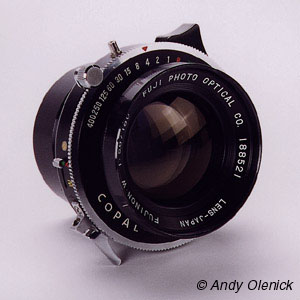
Figure 2. 180mm Fujinon W with Inner Lettering and Copal S Type
Shutter
Sometime around 1979 (give or take - this was also about the same time the
W line was being phased out in favor of the newer NW line - perhaps these two changes are
related?), Fuji moved the location of the labeling on their large format lenses to the
outer surface of the front barrel, excluding the serial number, which is located around
the outside of the rear barrel (along with the words "LENS-JAPAN"). With
the exception of the SF line, all current Fujinon large format lenses use outer
lettering. For an example of outer lettering see Figure 3.
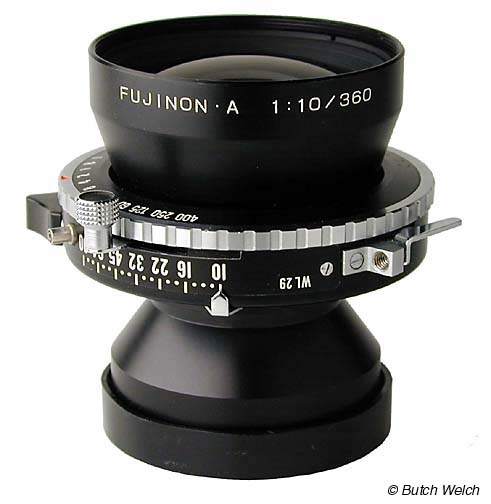
Figure 3. 360mm Fujinon A with Outer Lettering and Copal C Shutter
Type
Shutter: There are at least four shutter types
for Fujinon large format lenses - the Seiko (see Figure 5. below) and three different
styles of Copal shutters. For purposes of this discussion, I am designating the different
types of Copal shutters as follows:
Copal S - this is the older style Copal shutter with a serrated, chrome
speed setting ring. For an example of a Copal S style shutter, see Figure 2. above.
Copal C - this is another chrome ringed Copal, but the ring is thicker and more block-like
than the Copal S type. Other than the chrome plated finish on the speed setting ring, it
is identical in appearance to the current all back Copal shutter. For an example of
a Copal C shutter, see Figure 3. above.
Copal B - this is the current all black style of Copal shutter. For an example of a
Copal B shutter, see Figure 4.
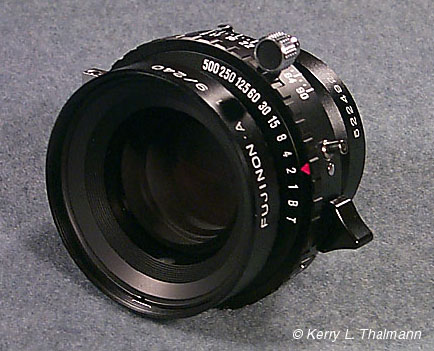
Figure 4. 240mm Fujinon A in Copal B Shutter Type
Coating:
Up until about 1977, all Fujinon large format lenses were single coated. At that
point, they began to transition over to their EBC multicoating process. In the
Fujinon Professional Lenses brochure from April, 1978, only the SWD line is listed as EBC
multicoated. By January, 1979, in addition to the SWD series, all of the new NW
series and select W and A series models are listed as EBC multicoated. By July, 1982,
everything except the L and SF series employed EBC multicoatings. Since the various
lines transitioned from single coated to EBC multicoated over a period of a few years,
there is no definitive date or serial number cut-off point for determining if a particular
lens is multicoated. Fortunately, it is easy enough to determine, through visual
inspection, if your Fuji lenses are single, or multicoated. To do so, hold the lens
in question under a bare tungsten light (standard household light bulb - other light
sources can be used, but the resulting reflections may look a little different due to the
color of the light source). Observe the colors of the reflections in the front
element group. For a single coated lens, all the reflections will be pretty much the
same color (perhaps slightly different shades of the same color). For the single
coated Fujinons I have observed, this is usually some slightly off white color (i.e. pale
magenta or pale violet). In any case, the reflections are all of similar color and
pale in nature (no bright, vivid eye-popping colors). For an example of a single
coated Fujinon lens, see Figure 5. For the EBC coated lenses, the colors of the
reflections will vary much more, and the colors will be much more vivid. Depending
on the lens, and the number of air spaces, the colors can be bright green, bright yellow,
bright cyan, bright red or bright magenta. For some examples of EBC multicoating
reflections, see Figure 6. The point is, more than one color should be present, the
differences in color very distinct, and the colors of the reflections very vivid.
See Figure 6. for and example of an EBC coated lens. I occasionally see ads or Ebay
listings for "multicoated, but not EBC" or "multicoating - pre-EBC"
Fujinon lenses. This does not appear to be consistent with the literature. All
the Fujinon brochures I have that refer to multicoating, specifically reference it as
EBC. In other words, based on the literature I have, there are only two types of
coatings for Fujinon large format lenses: single coated and EBC multicoated. If you
have evidence otherwise, please let me know.
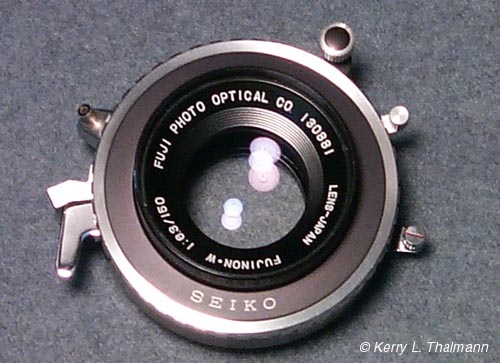
Figure 5. Single Coated Reflections - Seiko
Shutter
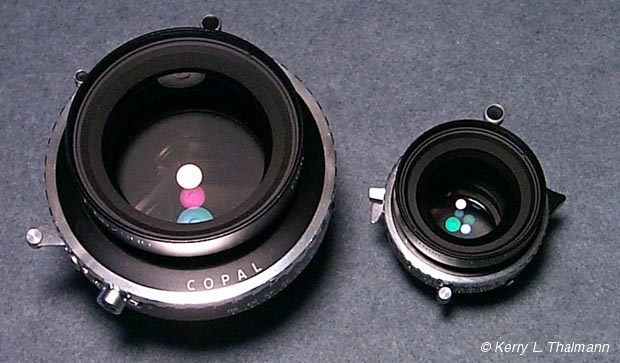
Figure 6. EBC Multicoated Reflections
Serial Number: Older models will have the serial
number engraved in the trim ring that holds the front element in place (see Inner
Lettering above). Newer, and all current models other than the SF series, have the
serial numbers painted on the outside of the rear barrel (see Outer Lettering above).
BTW, as I mentioned above, it appears that Fuji assigns serial number in
blocks for each type of lens. There are no serial numbers readable in any of my
older Fujinon literature. However, serial numbers are clearly visible in the
photograph of the CM/W line in the March, 1997 Fujinon Large Format Lenses brochure.
From that photograph, here are the serial number blocks for all of the CM/W models:
Focal Length |
Starting Serial Number |
105mm
CM/W |
780xxx |
125mm CM/W |
750xxx |
135mm
CM/W |
790xxx |
150mm
CM/W |
760xxx |
180mm
CM/W |
800xxx |
210mm
CM/W |
770xxx |
250mm
CM/W |
810xxx |
300mm
CM/W |
710xxx |
360mm
CM/W |
730xxx |
450mm
CM/W |
740xxx |
Table 2. Starting Serial Numbers for CM/W
Lenses
So, what happened to 720xxx? Beats me. Perhaps they were
contemplating a different model that never made it to market. Or perhaps that block
of serial numbers was assigned to a lens in a different lens line.
Date Purchased New: For lenses
purchased new only - this data is especially critical. Although purchase dates don't
necessarily correlate 100% with manufacturing dates (some lenses might sell as soon
as they hit the retail stores, others might linger on a dealer's shelves for years before
selling), accumulating accurate data in this column is the best we can hope to do for
creating any type serial number/date of manufacturing reference for the Fujinon lenses.
All data is welcome, but I am especially interested in dates of original purchase
for older Fuji lenses (1970 - early 1990s). So, if you are the original purchaser,
or have access to the original receipt, please include this information.
As this table grows, hopefully some trends will emerge that will be useful
when shopping for used Fujinon large format lenses. In the meantime, please browse
through the literature section with special attention to the
Literature Summary Table on that page. Even though that table has some gaps, some
trends are already evident (such as approximate introduction and discontinuation dates for
some models and when, approximately, some models transitioned from single coating to EBC
multicoating.
What I Don't Know: Here's some interesting questions I
have not been able to answer by perusing the literature that I have access to.
Hopefully someone reading this can help me out.
1. I am seriously lacking Fujinon large format literature for the years 1983 -
1996. I do have a D.O. Industries Price List from March 2, 1988, a Calumet Catalog
from 1986, and some pricing information from B&H ads in 1988 and 1991 but these are
just pricing references and don't provide the same level of detail as the official product
brochures. So, I'd really like to get my hands on some official Fujinon literature
from this time period. If you have access to any old Fujinon literature, please
check the date codes on the rear covers. The date codes are located in the bottom
right hand corners on the rear covers of the brochures. They are in parentheses
following the Ref. No. in the form (SK·81·04·SA·MW). Which corresponds to April,
1981. The text characters vary and are in Japanese on some brochures, but the
numeric characters always represent the publication date (two digit year, followed by two
digit month). I am also lacking brochures prior to October, 1977. So, if you
have access to any Fujinon large format lens brochures prior to October, 1977, or from the
years 1983 - 1996, please send me email and
let me know what you have. The ultimate goal would be to add any missing brochures
(or price lists, magazine articles... anything containing worthwhile information on the
Fujinon lenses) to this web site. I'd be willing to purchase any such references at
a fair price, or pay for photocopies and shipping, or make arrangements for sending me
high resolution scans (either on Zip disks or CD-ROM). Please don't flood my inbox
with a bunch of multi-megabyte high resolution scanned files - doing so will tie up my
system for days since I'm currently running through a 56K connection.
2. Was the 150mm f6.3 Fujinon W ever offered with EBC multicoating? I have
one of the little 150mm f6.3 Fujinons and love it as a backpacking lens. However,
the one I own, like every other sample I have ever seen is only single coated. At
first glance, the Fujinon literature seems to indicate that this lens was offered with EBC
multicoating for a couple years before it was discontinued. In the Fujinon
Professional Lenses brochures from April, 1981 and March, 1982, the column for this lens
in the spec table is shaded green - indicating that it is EBC multicoated. However,
I suspect this may be an error (the Fujinon literature from this period is wrought with
errors and inconsistencies). In the table headings, all other EBC coated lenses are
specifically prefixed with the letters EBC. The 150mm f6.3 is the only example that
is not labeled in this manner. Also, in the accompanying text, it is stated
specifically that the two other remaining members of the original W line (the 300mm and
360mm) are EBC multicoated. The 150mm is conspicuously absent from this statement.
So, I'm not sure what to believe. I'm happy with my little single coated
150mm f.3 Fujinon, but would not hesitate to upgrade to an EBC multicoated sample if I
ever happened across one for sale. So, to all you 150mm f6.3 owners out there, could
you check your lenses to determine if they are single coated or EBC
multicoated. If anybody has one they can positively identify as multicoated, please send
me email (and offer to sell it to me at a
ridiculously low price).
3. Were the 65mm f8 or 75mm f8 SW lenses ever offered with EBC multicoating.
These are two relatively small, lightweight wide angles that might be nice for
backpacking. However, based on what I have learned from the Fujinon literature I
have access to, neither appears to have ever been sold with EBC multicoatings. The
last reference I have to the 65mm f8 SW is the January, 1979 Fujinon Professional Lenses
brochure. In that brochure, the 65mm f8 SW, like all the other SW series focal
lengths, is listed as single coated. The 65mm f8 SW was discontinued by the time the
April, 1981 brochure was published. The 75mm f8 SW held on slightly longer. It
continued to be listed in the Fujinon literature up through March, 1982. But in all
cases, it is still listed as single coated (as was the 90mm F8, the only other member of
the SW line at that time). In the July, 1982 Fujinon Lenses for Professionals
brochure, the SW line is no longer listed. The New SW (NSW) line makes it's debut in
this brochure with focal lengths of 90mm, 105mm and 125mm (all f8 maximum aperture and all
EBC multicoated). So, it doesn't appear that either of the little f8 wide angles
were ever offered with EBC multicoating. But, being an eternal optimist, I have
lingering hope that perhaps a few multicoated samples were shipped between the publication
of the last brochures featuring these two lenses and the date when they actually ceased
production. A bit of a stretch, but if you happen to be the proud owner of either a
65mm f8 SW or a 75mm SW, could you please check the coating
type. If yours happens to be multicoated, could you please send me email informing me of this miracle.
4. Ditto on the L series. The 300mm and 420mm L series lenses were
discontinued back in mid-1982. It was during this same time period that the C series
was introduced. The L series was Fujis low cost, entry level line. The 300mm
and 420mm L lenses were both in big, relatively expensive Copal #3 shutters. When
the EBC multicoated 300mm and 450mm C series models came out in mid-1982, in smaller,
cheaper Copal #1 shutters, there was little reason to continue offering the 300mm and
420mm single coated L models in spendy #3 shutters. So, I think it's fairly safe to
assume neither of these models were ever offered with EBC multicoatings. With no
alternative in the C line, the 210mm f5.6 was the lone member of the L series to survive
past mid-1982. It is still listed in the D.O. Industries Price List dated March 2,
1988. I am currently lacking official Fujinon literature between 1983 and 1996, so
I'm not sure exactly when the 210mm L was discontinued, or if it was ever manufactured
with EBC multicoatings. Again, if you have a 210mm Fujinon L, could you check the coatings and let
me know if it appears to be multicoated.
5. I have no personal interest in the soft focus Fujinon SF series, but for the
sake of completeness, could someone please tell
me if the current SF models are multicoated. They are listed as single coated in
both the 1986 Calumet Catalog and the March 2, 1988 D.O. Industries Price List. The
March, 1997 Fujinon Large Format Lenses brochure I have is in Japanese, so I haven't been
able to determine if it states that the SF lenses are EBC multicoated. The SF lenses
are also the only current Fujinon large format lenses that are labeled using inner
lettering. All other models switched to outer lettering in the early 1980s.
Thanks in advance for any assistance. If you can specifically answer any of these
five questions, or if you have anything else pertaining to Fujinon large format lenses
that you would like to contribute to this web site, please let me know. The purpose of this web site
is to share information, so all contributions are welcome and encouraged.
© Kerry L. Thalmann, 2000
|